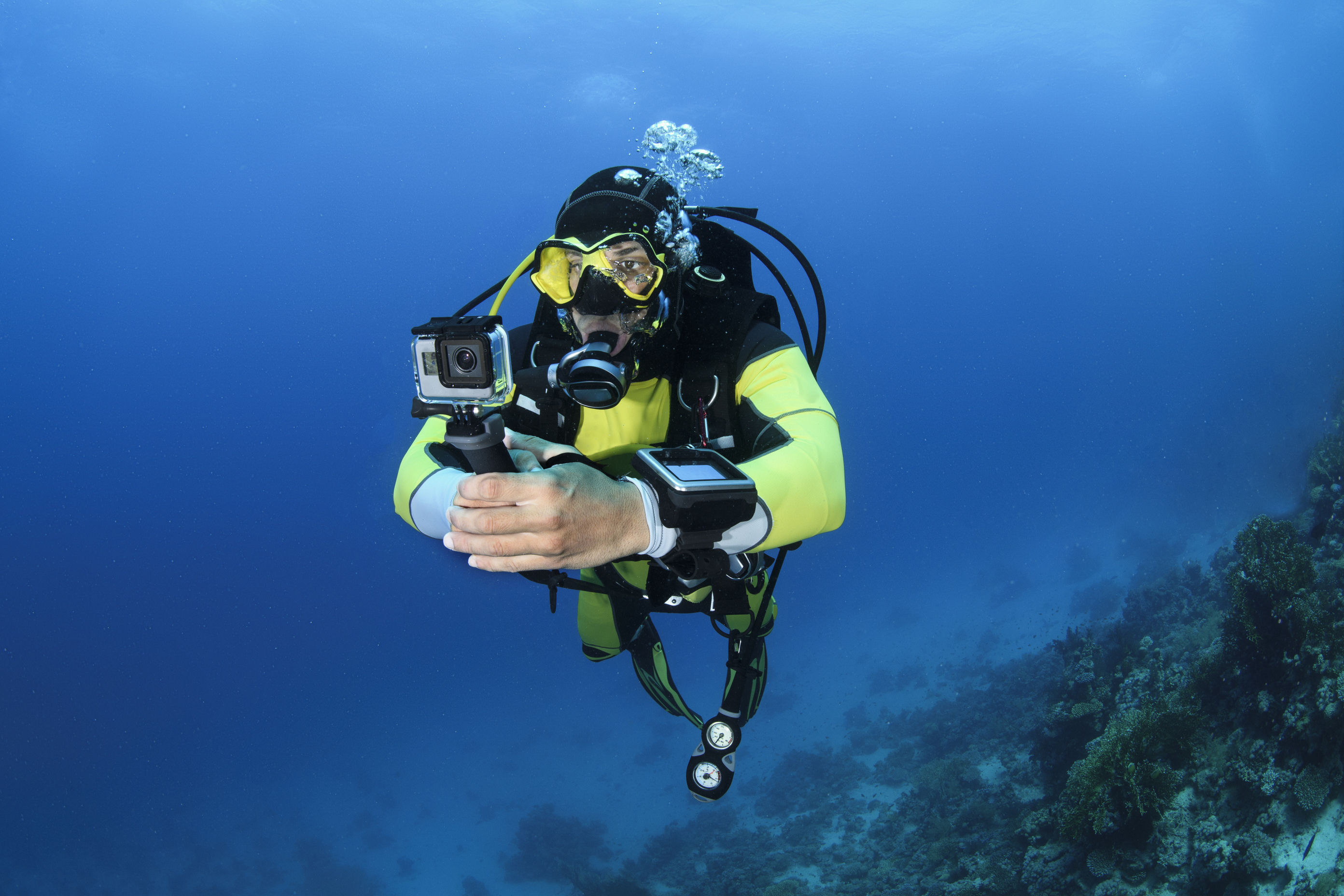
GoPro's Hero4 Session camera has been a headache for the company in 2015, but its problems could be overshadowed if a drone is a success. Image source: GoPro.
GoPro (GPRO 3.08%) is officially getting into the drone business, and it's a move that could change the direction of the company. Shares have been slammed lately as fear of disappointing camera sales spread, but drones could add fuel to the company's action sports image and boost sales.
What's especially exciting about the drone business is that it could be massive from the first day GoPro launches the drone it's calling Karma.
How big could drones be for GoPro
It's tough to say exactly how big the drone business will be for GoPro, but we have some guides that show where it could go. In the past 12 months, GoPro has shipped 6.97 million GoPro cameras, so that's a start to how far its brand reaches. If the demand for drones is even 10% that size, the product could be huge.

DJI's Phantom 2 drone with a GoPro. Image source: DJI.
We also know that DJI, maker of the Phantom line of drones that has become an industry standard, generated about $500 million in sales last year and expects to sell $1 billion of product in 2015. So, the small drone market is worth well over a $1 billion even before any big names enter the fray.
Just how big could this be for GoPro? We don't know how much the GoPro Karma will sell for, but we can make some guesses based on the competition. For example, DJI's entry-level drone sells for $699, and products go up to $4,550 for a Spreading Wings S1000 package. GoPro's entry-level product may compete with DJI on the low end, but I would estimate that an average sale will be somewhere in the $1,000 to $2,000 range.
To get an idea of how that could impact sales, I've built the sensitivity analysis below. An average price of $2,000 and 500,000 drones sold would make this a $1 billion business for GoPro. Remember, that's less than 10% of the number of camera units GoPro sold in the last year, so I don't think that's a stretch.
|
250,000 Units Sold |
500,000 Units Sold |
1 Million Units Sold | |
|---|---|---|---|
|
$1,000 Drone |
$250 million |
$500 million |
$1.0 billion |
|
$1,500 Drone |
$375 million |
$750 million |
$1.5 billion |
|
$2,000 Drone |
$500 million |
$1.0 billion |
$2.0 billion |
Calculations by author.
The big question for GoPro's drone business
While GoPro's drones are often compared to drones being worked on by some of the major tech players, they're actually targeting a very different market: action sports and hobbyists. Unless GoPro takes an unusual strategy, there won't be plans to deliver packages via drone.
This means GoPro is going after a growing but stratified drone market currently dominated by companies like Parrot and DJI without much brand awareness. GoPro will have a brand advantage the second it enters the market.
The questions is: Can GoPro can make a drone that will impress potential buyers?
Drones available today come with a disparate number of features that may or may not include smartphone operations, tracking ability, flight plan mapping, extended range, and instant video feedback. If GoPro can pack attractive features into a small package and make flight operations simple, it could have a hit on its hands, and it could consolidate the hobby and sports drone market. But that might be a lot to ask for the company's first drone offering.
Drones could make or break GoPro stock
What's both exciting and scary about the GoPro Karma drone is that it could make or break the stock over the next year or two. A successful launch could make a weak 2015 holiday season a distant memory, but a disastrous launch like the GoPro Session could lead to a tarnished reputation.
I'm betting GoPro has its ducks in a row when it launches Karma sometime in 2016. If it does, the stock looks like a steal at today's price. But if it doesn't, there's no telling how low it could go in 2016.






